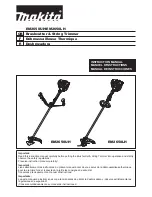
Field Measurements
5:4
CP 1 – Cathodic Protection Tester Course Manual
©
NACE International, 2000
02/01/05
•
200 Volts–Rectifier voltage output
•
1000 Volts–Unknown voltage
Location of reference electrode
To minimize the IR drop in the electrolyte, the reference electrode should
be positioned as near to the structure as possible. When dealing with
underground piping or tanks, the proper position of the electrode is over the
center of the structure. There are times, however, when the electrode is
purposely placed at some distance from the structure; this is discussed later
under the section “Surface Potential Survey” and under “Remote Earth
Determination”.
In water storage tanks, the electrode should be positioned as close to the
wall of the tank as possible. The same is true for waterfront and offshore
structures; the electrode should be as close to the piling as possible. In
moving water, the electrode may swing about, so some structures are
equipped with guide wires or perforated plastic ducts to restrict the
movement of a portable electrode.
For on-grade storage tanks, data are frequently taken around the periphery
of the tank. This may not yield accurate data about the potentials under the
tank bottom, particularly if the anodes are in a ring around the tank.
Permanent reference electrodes under the tank bottom yield the best data.
Close Interval Potential Survey
A series of structure-to-electrolyte potentials measured over the top of a
pipeline may be helpful in determining variations in cathodic protection
levels. A potential profile is performed to determine if adequate cathodic
protection is achieved at all points along the structure. Figure 5.2 illustrates
a pipe-to-soil potential profile. Note that the copper-copper sulfate
reference electrode (half-cell or reference cell) is connected to the negative
terminal of the meter.
In a close interval survey, the pipe-to-soil potential data are collected on a
continuous basis. This is usually done by carrying a datalogger and wire-
dispensing device equipped with distance measuring capability. Two
reference electrodes, mounted at the end of short poles, are used, one in
each hand. The wire is attached to a test station and the operator walks over
the pipeline, making contact between the electrodes and the earth at closely
spaced intervals. The operator records above grade appurtenances and other
identifying items along the way so the location of the data can be
Содержание CP 1
Страница 1: ...CP 1 Cathodic Protection Tester Course Manual February 2005 NACE International 2000 ...
Страница 265: ......
Страница 266: ......
Страница 267: ......
Страница 268: ......
Страница 301: ...RP0169 2002 32 NACE International ISBN 1 57590 035 1 ...
Страница 535: ...TM0101 2001 24 NACE International ISBN 1 57590 137 4 ...
















































